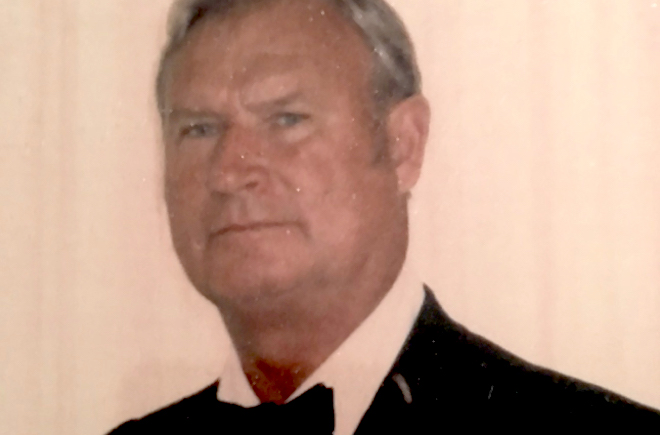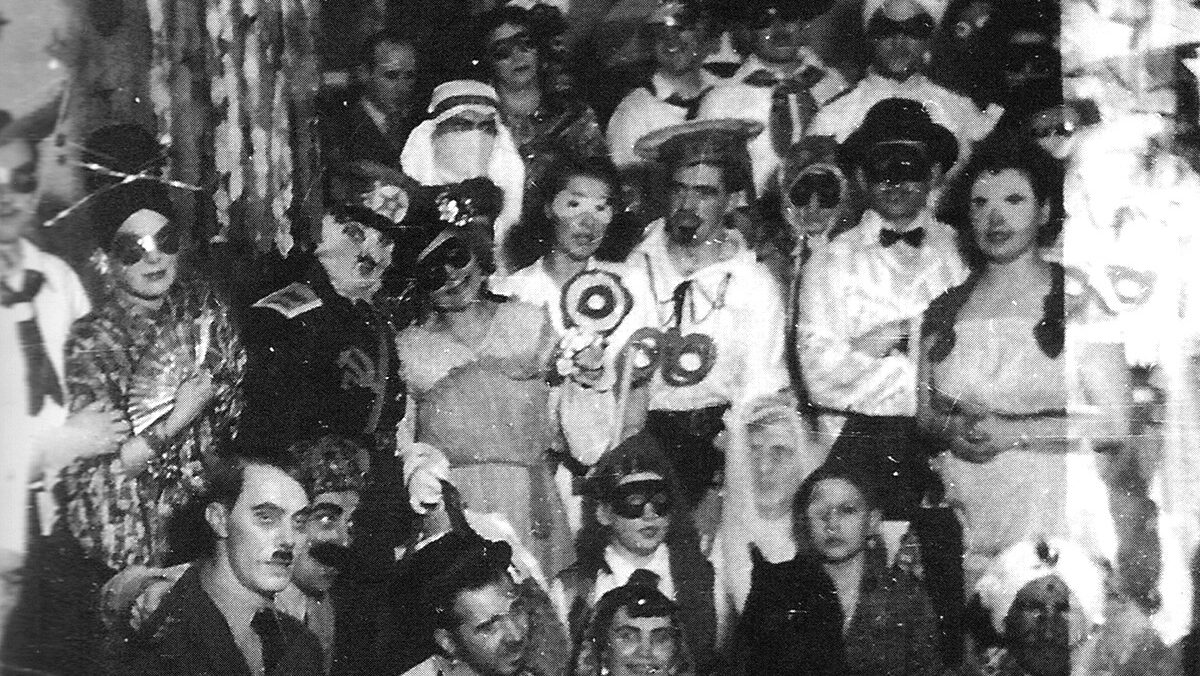Hitler also went on a conquering spree soon thereafter, and his tanks rumbled into a number of countries, including the three Baltic States. Incensed by all of these authoritarian great power grabs for territory, Laats surreptitiously made his way to Finland, which was embroiled at the time in her Continuation War with the Soviet Union.
Laats apparently served in a Finnish reconnaissance unit in 1943 before joining the 2nd Battalion of the legendary infantry unit JR (jalaväerügement) 200, which was composed almost in its entirety of Estonian volunteers who'd made their way to Finland in order to avoid being dragooned into the German occupation army in their home country.
Laats and his JR 200 comrades in arms fought against the overwhelming forces of the Red Army in the Karelian isthmus, on the shores of Vyborg Bay and on the banks of the Vuoksi river. Much of this territory was subsequently annexed by Stalin, as were big swaths of territory in Estonia and Latvia.
Having lost his homeland of Estonia first to the Stalin, then to Hitler and then finally to the Soviets again for half a century, it quickly became obvious after the capitulation of Finland to the USSR that sticking around there wouldn’t be a good idea either. Manhunts soon began in Finland for many of the men who’d only days before been putting up armed resistance on the frontier to try to repel the boarders of the Red Army.
Having initially made his way to Sweden, Laats stowed away on a ship to Brazil. From there, he managed to make his way to the US as an immigrant. In America, this new arrival found himself in a situation familiar to lots of Estonians, Latvians and Lithuanians who'd been run out of their homes – a stranger in a strange land with little knowledge of English and empty pockets.
From 1946 to 1951, he worked as a seaman aboard Norwegian and Finnish merchant vessels before settling for a while in San Francisco.
Like many other Finns and Estonians before him who had combat experience, Laats volunteered for service in the US military. In 1954, he found himself in Army infantry.
After completing parachute school, Laats was sent first to the11th and later the 82nd
Airborne Division. After serving in the US for some time, he was transferred to Munich in Germany. His first 5-year period of enlistment ended with Laats heading an anti-tank infantry squad in North Carolina.
In 1959, he applied for Special Forces training. After becoming qualified as a combat medic, and soon after being assigned to the 7th Special Forces Group (Airborne) at Fort Bragg, the Army made a minor “movie star” out of Laats. Clicking on this link or banging in “Guerrilla USA” in your search engine will enable you to have a look at the Army promotional film by that name on YouTube. Jyri, playing a guerrilla chief in the mountains of West Virginia, is front and center immediately after the 13 minute mark, speaking with his Estonian accent and wearing a cowboy hat, with a pistol as well as what almost certainly looks like a Finnish hunting knife or puukko on his belt.
Jyri Laats soon drew orders to Laos, along with several hundred other Special Forces troopers. In 1960, the Kingdom of Laos was being subverted by the North Vietnam and Soviet Union-backed Pathet Lao insurrectionists, while the US supported regular and irregular anticommunist forces in Laos. At that time, MTT (Mobile Training Team) “White Star” in Laos was being commanded by Lieutenant Colonel Aito Keravuori. Keravuori happened to be an American officer of Finnish descent.
Throughout his Special Forces career, Jyri Laats would often find himself in the company of other American soldiers of Estonian and Finnish heritage, such as his friend Major Larry Thorne, who died late in 1965 as the result of a helicopter crash in Laos while on a combat operation. An powerful aversion to communism came to these men as a matter of course.
After WW II, the United States and her NATO allies soon found themselves staring the Soviets and their proxy partners down in Berlin, Cuba, Latin America and a host of other places, so the fit between the Eastern European men who had previously been rendered men without homelands and Special Forces came quite naturally.
More than any of the other American special operations units, the 10th Special Forces Group drew substantially from the expertise of the Finns and Estonians, who were experienced in winter and forest warfare, and were happy to pass on various military tips of the trade, ranging from the often intricate art of the ambush to the details of warfare on skis, where you pull your equipment behind you on an ahkio sled.
Once in Laos, Jyri Laats tended to the ill and the wounded and was involved in reconnaisance missions that ranged all the way up to the Chinese border. After Laos, Laats also found his way to the 10th Special Forces Group in Bavaria (Southern Germany) and ended up serving under Paavo Kairinen – yet another officer of Finnish extraction. The Group Surgeon at the 10th at the time was another Estonian-born fellow by the name of Einar Himma. Himma later retired as a Colonel after a long and interesting career.
The particular A-team Laats served on in Bavaria would have been deployed to the aid of one of the Northern European countries, had push come to shove during the Cold War.
Special operations duty can be physically punishing, and Laats developed some medical issues that ended his SF career, but they didn’t stop him from doing three tours as a senior NCO at U.S. Army hospitals in the Republic of Viet Nam. When the bitter end arrived in that country, Himma and Laats participated together as medical specialists in the repatriation to the US of 24 American POWs who’d been held captive by the Viet Cong.
The military career of Jyri Laats drew to a close after 24 years of service in Honolulu at Tripler Army Medical Center, in a ward where he supervised a workforce of 350 NCOs and enlisted men.
Fate’s fickle finger did however introduce a final dramatic moment before Jyri could retire, with three Apollo program astronauts being entrusted to the personnel in his ward at Tripler for half a month.
As the Apollo spacecraft returned from orbit on July 24, 1975, with Deke Slayton, Jim Stafford and Vance Brand aboard, the drogue chute of their capsule deployed above the Pacific as expected. When the spacecraft’s vent valve opened, the reaction control jets were still operating, admitting a potentially lethal dose of nitrogen tetroxide, which is one of the most toxic chemicals used in spaceflight. As the deadly fumes lingered in the spacecraft, Stafford, Brand, and Slayton began choking uncontrollably. All three developed pneumonia after splashing down and were hospitalized at Tripler for two weeks before they recovered.
If I recall correctly, Jyri Laats retired as a Master Sergeant, but I could be wrong.
Laats had a typically understated Nordic personality and the stern face of a soldier’s soldier, but he’d easily break into a smile in the company of friends. After Estonia regained her independence in 1991, he’d come by the old country now and then and visit, among others, with General Aleksander Einseln (another US Army Special Forces veteran of Estonian extraction) who was the Commanding General of the Estonian Armed Forces for several years in the nineties.
Aleksander Einseln preceded his friend Laats in death by a year and a half, dying in Estonia last year on 16 March. Earlier this year, General Einseln’s ashes were laid to rest at Arlington National Cemetery in the US.
Jyri Laats continued to live in Honolulu for years before finally moving to Palm Springs. Jyri’s mother had managed to make it out of Estonia in 1944 just before the return of the Red Army, found freedom in Australia many years ago, and is buried there. As far as I know, the joys of marriage and having children passed Jyri by. That kind of thing can happen when you get deprived of the birthright of your native country at an early age and you end up being tossed around by the vagaries of fate.
US Special Forces have been known to train in the Baltic States these days, partnering on occasion with the special operations troops of Estonia, now independent again. Awareness of this development undeniably gladdened Jyri.
Details about funeral services for Jyri Laats haven’t been made public yet. He was a good man, faithfully loyal to his several homelands, and will be sorely missed by a number of friends who are – no surprise here – scattered to the four winds around the globe.
Jyri Laats had been bestowed with a number of military honors over the years, to include decorations awarded by Finland, the United States and the Republic of Viet Nam, not to mention the Order of the Cross of the Eagle in Gold of the Republic of Estonia.
=====
This account of the life of Jyri Laats was written by Juri Estam, who served in the American military concurrently with Mr. Laats.




